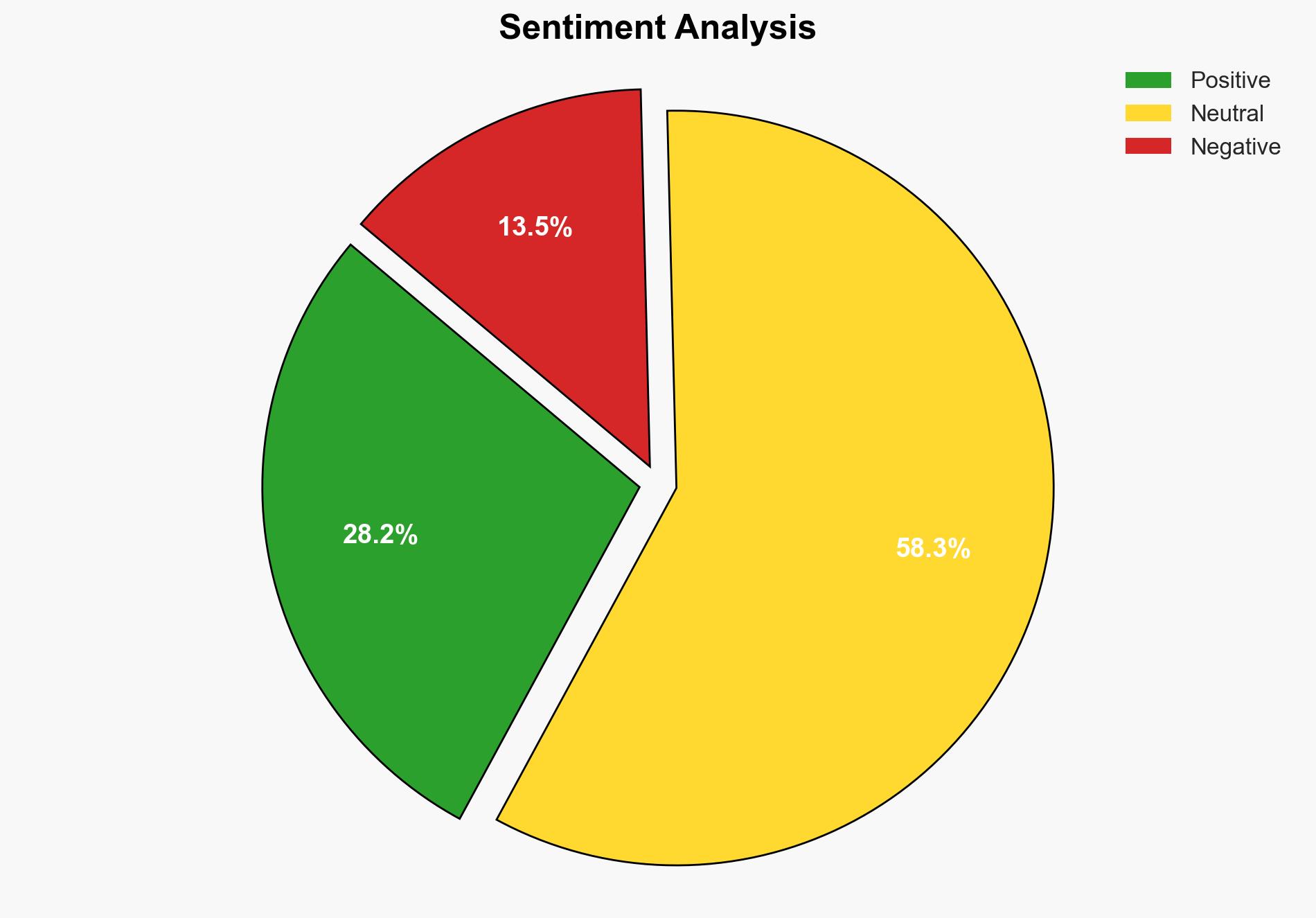Top 10 data security best practices for 2025 – BetaNews
Published on: 2025-03-20
Intelligence Report: Top 10 Data Security Best Practices for 2025 – BetaNews
1. BLUF (Bottom Line Up Front)
The report identifies a strategic shift in data security practices necessary to counter increasingly sophisticated cyber threats. Key findings highlight the need for advanced AI-driven solutions, continuous monitoring, and zero-trust frameworks to protect sensitive data. Recommendations focus on proactive data classification, privilege access management, and automation of risk remediation to maintain stakeholder trust and prevent breaches.
2. Detailed Analysis
The following structured analytic techniques have been applied for this analysis:
General Analysis
The evolving landscape of cyber threats necessitates a robust data security framework. As organizations transition to hybrid work models and cloud-based technologies, the attack surface expands, increasing vulnerability. AI advancements are outpacing traditional defense mechanisms, necessitating a shift towards automated, AI-driven data discovery and classification. Implementing privilege access principles and continuous monitoring are critical to reducing internal misuse and external exploitation. Zero-trust models are essential for ensuring secure access and minimizing risks associated with unauthorized data sharing.
3. Implications and Strategic Risks
The implications of inadequate data security practices are significant, posing risks to national security, regional stability, and economic interests. High-profile breaches can lead to costly compliance violations and loss of stakeholder trust. The transition to cloud environments and hybrid work models increases exposure to potential threats, necessitating a reevaluation of existing security protocols. Failure to adopt advanced security measures could result in significant financial and reputational damage.
4. Recommendations and Outlook
Recommendations:
- Adopt AI-driven data discovery and classification tools to automatically identify and categorize sensitive data.
- Implement privilege access management to minimize internal misuse and external exploitation risks.
- Enhance continuous monitoring capabilities to detect and respond to anomalous behavior in real-time.
- Automate risk remediation processes to prevent unauthorized data sharing and reduce manual intervention.
- Transition to a zero-trust security model to ensure secure access and minimize risks.
Outlook:
In the best-case scenario, organizations that adopt these practices will significantly reduce their vulnerability to cyber threats, maintaining stakeholder trust and compliance. In the worst-case scenario, failure to implement these measures could result in severe breaches, financial losses, and reputational damage. The most likely outcome is a gradual adoption of these practices, leading to improved security postures over time.
5. Key Individuals and Entities
The report does not mention specific individuals or organizations by name. However, it emphasizes the importance of proactive engagement by all stakeholders in the data security ecosystem to ensure the successful implementation of recommended practices.




